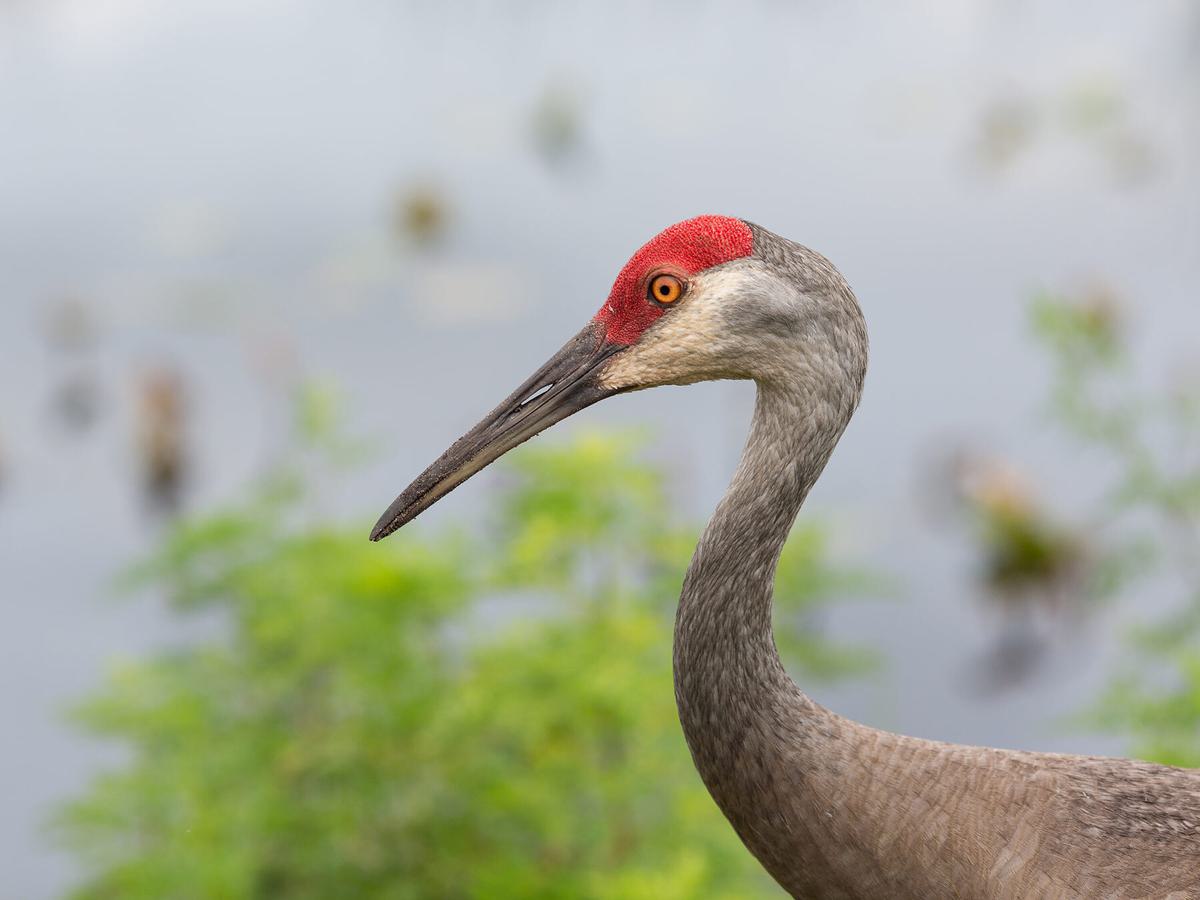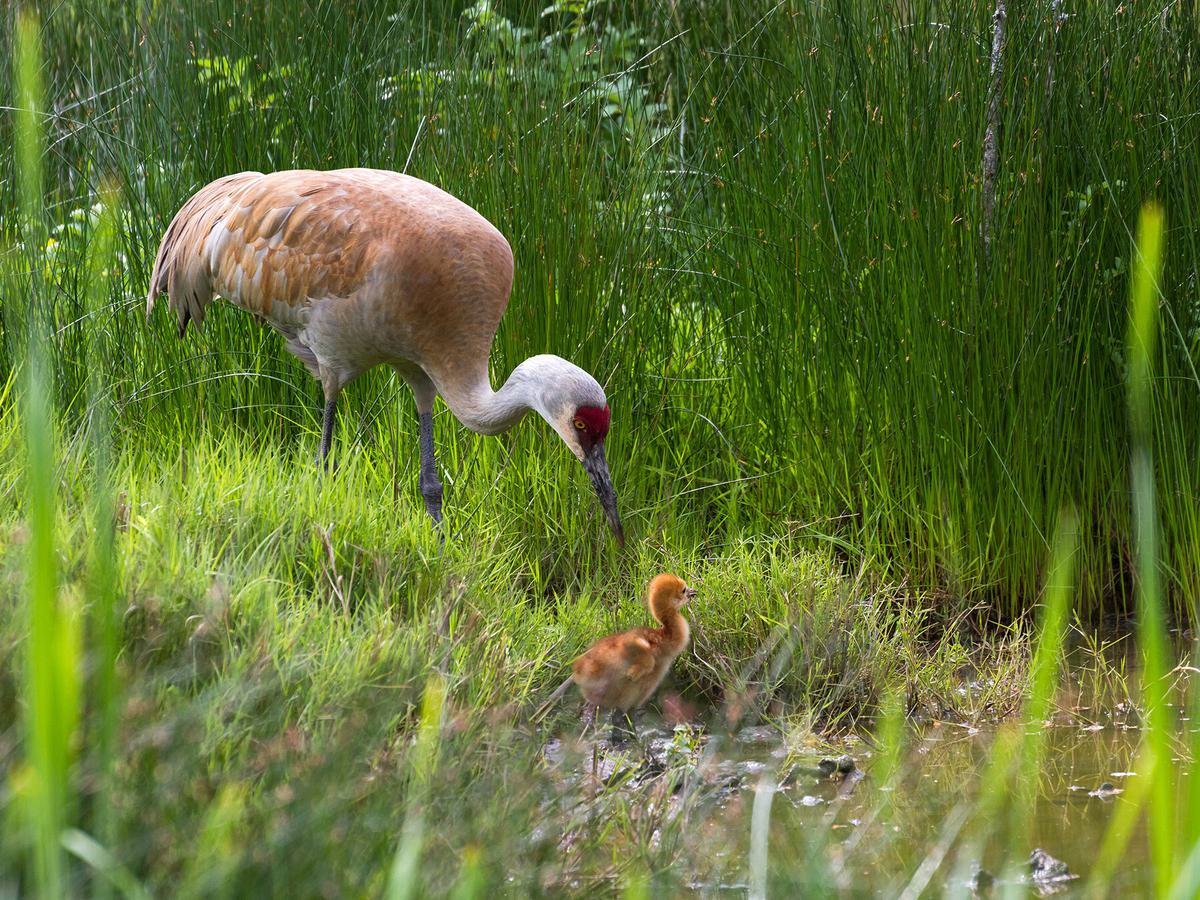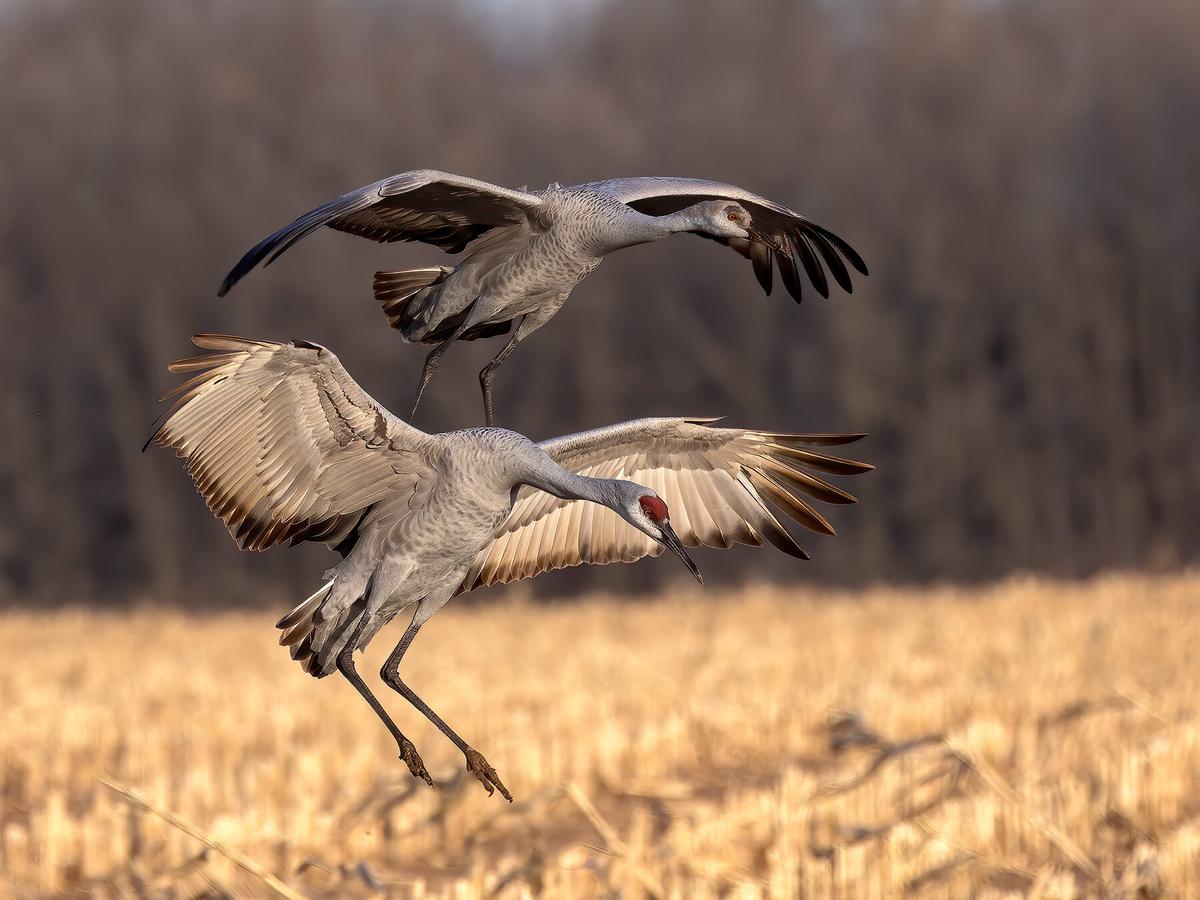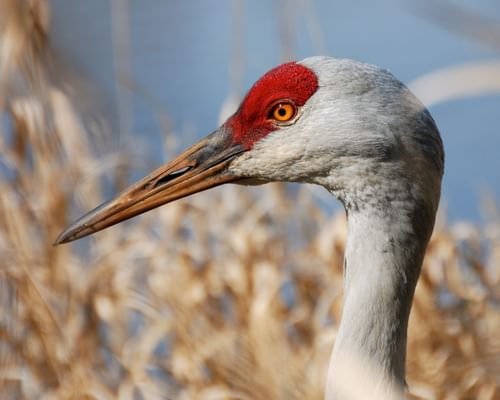Have you ever witnessed a sandhill crane (Antigone canadensis) migration? It’s a rather surreal experience, to watch these magnificent birds gather in flocks numbering in the millions at various staging areas throughout their migrations pathways.
Many sandhill cranes migrate extraordinarily long distances. Those that nest in Siberia cross the Bering Straits every spring and fall. Others migrate from Canada, Alaska, and the Northern continental US. The only populations of sandhill cranes that are not migratory are those nesting in Florida, Mississippi, and Cuba.
There are three different subpopulations of the cranes that do migrate - the lesser, greater, and Canadian sandhill cranes. All three of these subspecies have major migration corridors and stopover sites where large flocks of individuals congregate every season. Let’s take a closer look at the migratory habits of the sandhill crane!

A large flock of Sandhill Cranes during migration
When do Sandhill Cranes migrate?
Migratory sandhill cranes - those that nest in northern regions - have a fall and spring migration period. What month the birds begin their seasonal travels depends on what region they are coming from. Generally, sandhills migrate south between September and November. Then return north between February and April.
These sandhill cranes are grouped into six different populations based on where they nest and where they overwinter. We will take a closer look at those individual groups to gain a more detailed picture of when each population migrates.
Central Valley
The Central Valley populations consist of the sandhills that nest in the Pacific Northwest (British Columbia, Washington, Oregon, and northern California).
This group heads south for their wintering grounds in southern California between September and mid-October. They begin their return journey north in February or March.

Close up of a Sandhill Crane
Pacific Flyaway
The Pacific Flyaway population has a similar nesting and wintering range as the Central Valley sandhills. However, it includes birds breeding farther north into southern Alaska - due to longer winter, these birds have a slightly earlier fall migration period.
Cranes will begin to leave Alaska in late August for their Central Valley wintering grounds. Departure from this region typically starts in February.
Rocky Mountain
The sandhill cranes that nest in the western states of Montana, Idaho, Colorado, Wyoming, and Utah are known as The Rocky Mountain population.
These birds typically begin their fall migrations to New Mexico, Arizona, and central Mexico between August and October. Then, they travel back north between February and March.

Sandhill Cranes in flight through the mountains in New Mexico
Lower Colorado River Valley
The Lower Colorado River Valley population (Nevada and southwest Idaho) has similar fall and spring migration patterns to the Rocky Mountain Population. These sandhill cranes generally leave their nesting grounds around September and return in March.
Eastern Flyaway
Sandhill cranes in the eastern United States - dubbed the Eastern Flyaway population - may begin migrating as early as September - this period can continue until January if the winter is mild. These crane populations will leave their Florida wintering grounds to return north between February and early April.
Mid-continent
The Mid-continent populations make up the largest group of sandhills, consisting of the birds that nest in Siberia, Alaska, Canada, and northwest Minnesota.
Fall migrations for this population can begin as early as August, depending on how far north the birds are nesting. Cranes throughout this region rarely wait beyond October to start their long journeys. These groups will begin returning north between February and March, leaving their Kansas, Gulf Coast of Texas, and northern Mexico wintering grounds.

Greater sandhill cranes - winter migration through Southern Colorado's San Luis Valley, Monte Vista National Wildlife Refuge
Why do Sandhill Cranes migrate?
Sandhill cranes migrate to escape the harsh winters that occur in their native breeding grounds of Siberia, Alaska, Canada, and the northern continental US.
This species is not equipped to overwinter in these regions. Instead, they migrate over long distances to wintering grounds in southern California, Texas, Florida, and Mexico.
How far do Sandhill Cranes migrate?
How far sandhill cranes migrate depends on where they are flying from. In a single day, the birds can cover nearly 300 miles. But are known to reach 500 miles on a day with good tailwinds. On the whole, some sandhills travel over 5,000 miles from their summer nesting habitat to their wintering grounds.

A sandhill crane with a week year old chick
Do Sandhill Cranes Migrate in flocks?
Sandhill cranes often migrate within smaller family groups. However, they will gather in extremely large flocks - numbering in the tens of thousands - at stopover sites along their migration corridors. The cranes use these key staging locations to recuperate, hunt, and socialize before continuing their long journey south.
Do all Sandhill Cranes migrate?
Not all sandhill cranes migrate. Those nesting in Florida, Mississippi, and Cuba are year-round residents - they do not have to worry about escaping harsh winters. However, three subpopulations are migratory - the lesser, greater, and Canadian sandhill cranes.
These three subspecies nest in Siberia, Canada, Alaska, and the northern United States. Because they are not equipped for the winters in these regions, the birds migrate south every fall to wintering grounds in Florida, Texas, New Mexico, Arizona, California, and Mexico.

A pair of Sandhill Cranes (Antigone canadensis), foraging for food
Do Sandhill Cranes migrate at night?
Sandhill cranes generally only migrate during the day when they have good tailwinds. However, if the birds are only 100 or so miles from their destination, they will sometimes continue late into the night.
What do Sandhill Cranes do in the winter?
After sandhill cranes have undergone their long migration, the birds flock to prairie and marsh habitats in areas such as Texas, Florida, California, and Mexico. Here, they hunt and socialize throughout the winter months before beginning their spring migrations back to summer nesting grounds.

Two Sandhill Cranes in Wisconsin
Sandhill Migration FAQs
When do sandhill cranes migrate south from Michigan?
Sandhill cranes generally begin their southern migration from Michigan in October. Although, some birds may stick around until November.
When do sandhill cranes migrate south from Wisconsin?
Sandhill cranes will begin their migration south from Wisconsin starting in September, peaking in October. They return to their nesting sites around March.
When do sandhill cranes migrate through Nebraska?
The sandhill crane spring migration through Nebraska is much more reliable than fall migrations. Every year between mid-February to mid-April cranes pass through Nebraska, where they congregate in the millions at key stopover sites along the Platte River.
Do sandhill cranes migrate through Arkansas?
The easternmost sandhill crane migration corridor barely touches the northeast corner of Arkansas. It is not impossible to see these birds migrating through Arkansas. However, the state is not part of a major migration pathway.
Do sandhill cranes migrate across oceans?
Sandhill cranes nesting in Siberia migrate across the Bering Straits - from Russia to Alaska - every spring and fall.

